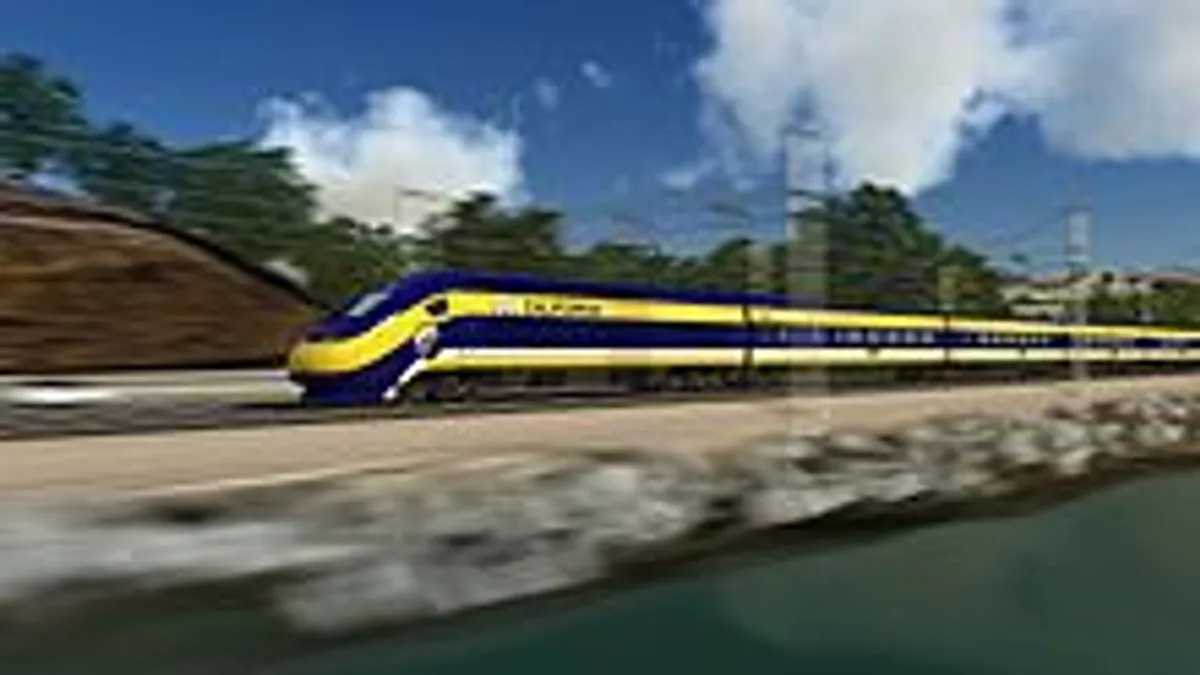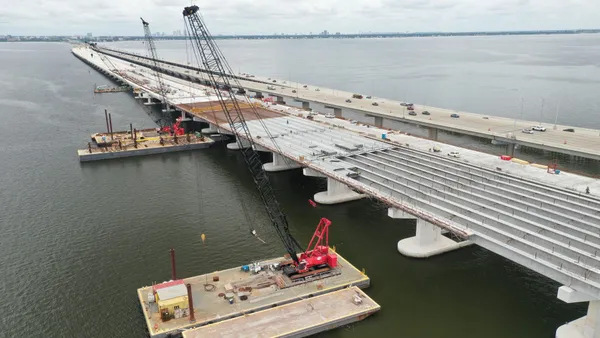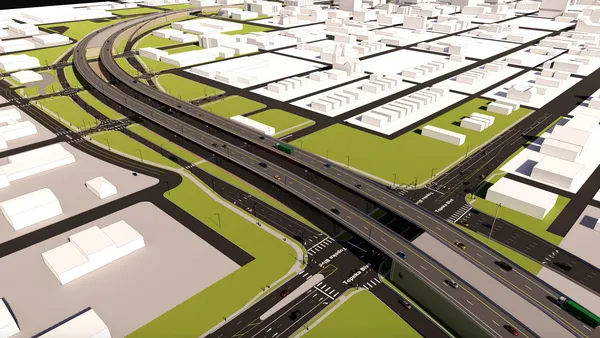Dive Brief:
- The California High-Speed Rail Authority in January directed design-build contractor Tutor Perini to demolish a partially constructed highway bridge along the authority's future $77 billion bullet train route because the bridge did not meet its “level of quality for a work product” and showed “signs of distress,” according to the Los Angeles Times.
- Ron Tutor, CEO of Tutor Perini, reportedly told the Times that the authority approved its tall bridge design and then changed its mind. Three other similar planned bridges are now undergoing a redesign as well. Designers of the bridges in question will dump the previous mechanically stabilized, earth-wall structure in favor of cast-in-place abutments. An engineering expert interviewed by the Times said the earth-wall systems are cheaper to build but have a higher rate of failure. In addition, Robert Bea, a civil engineering professor emeritus at University of California, Berkeley, said such a bridge would place pressure of 12,000 pounds per square foot on the area's very weak soil.
- The authority and its engineers and consultants provide only design 15% of bridges and other structures, leaving their contractors to design the other 85%. Times construction experts said that in many other cases government entities provide 30% of the design, which is less risky when the responsible agency has no prior experience building such a complex project.
Dive Insight:
Since the original design was approved by the authority, according to Tutor Perini, the demolition, redesign and construction will, in all likelihood, result in a hefty change order in the favor of the contractor, adding to the already escalating cost of the high-speed rail project.
Two years ago, the authority issued a $63.6 million change order to the company and added 17 months to its contract schedule after Tutor Perini claimed it was prevented from starting work due to the authority's slow land acquisition process. The company received $50 million for delays and $13 million for schedule acceleration fees.
This is just the latest obstacle for the bullet train officials, who are trying to make progress in the face of escalating costs and delays. The project cost is now almost double the original price tag, and the first leg of the line is four years behind schedule.
And while the public is still in favor of high-speed rail overall, the number of those who believe that taxpayers should continue to fund this iteration is small in comparison. In fact, only 31% of registered voters are in favor of putting any additional taxpayer money toward the bullet train, according to a poll conducted collaboratively by the University of Southern California and the Los Angeles Times. Nearly 50% of respondents said they would stop construction altogether.














